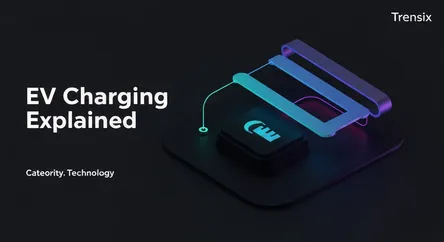Technology
EV Charging Explained

Discover how EV charging works, from home setups to public stations, and why it's crucial for the future of sustainable transportation.
What is it?
EV charging is the process of supplying electricity to an electric vehicle's battery, the equivalent of refueling a gasoline car. It's categorized into different levels based on speed. Level 1 uses a standard household outlet for slow, overnight charging. Level 2 provides faster charging and is common for home installations and public stations. The quickest method is DC Fast Charging, found along major travel routes, which can replenish a significant amount of range in under 30 minutes. This network of chargers is the backbone of the electric transportation ecosystem.
Why is it trending?
The topic is trending due to the explosive growth in electric vehicle sales globally. As more consumers and fleets switch to electric, the demand for accessible and reliable charging infrastructure skyrockets. Governments worldwide are offering incentives and investing heavily in building out public charging networks to support climate goals. Major investments from automakers and private companies are also accelerating the expansion and improving the technology, making chargers faster and more widespread than ever before.
How does it affect people?
For EV owners, charging shifts the refueling paradigm from gas stations to homes, workplaces, and public destinations. This offers convenience and potential cost savings, especially when charging overnight on lower electricity rates. However, it also introduces considerations like 'range anxiety' and the need to plan for charging on longer trips. For society, a robust EV charging network is essential for reducing transportation emissions, improving air quality in cities, and decreasing dependency on fossil fuels, driving a major shift in our energy and transport systems.